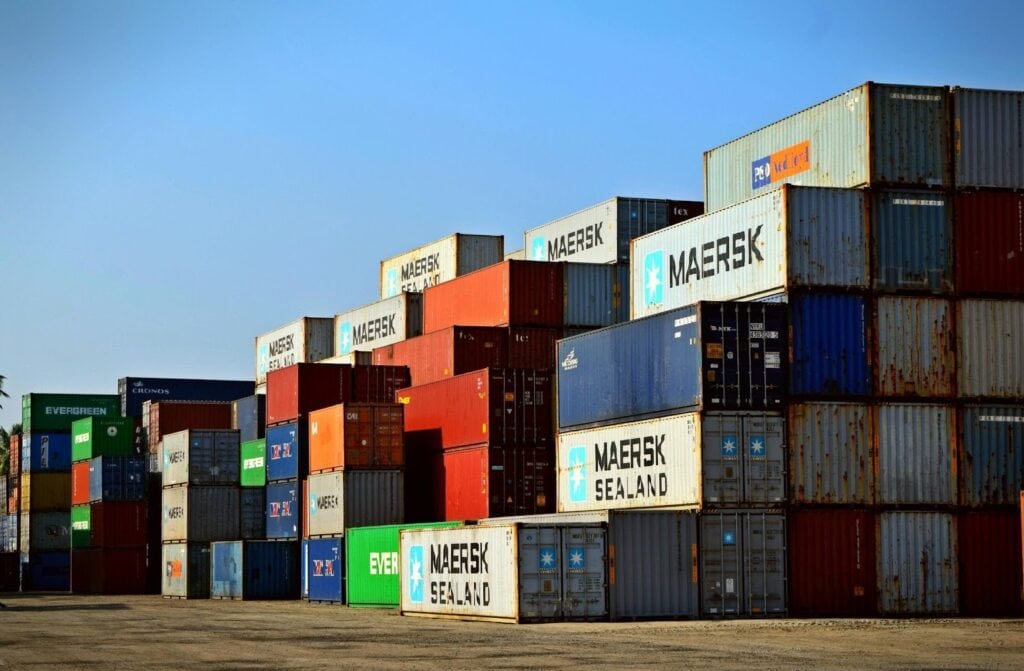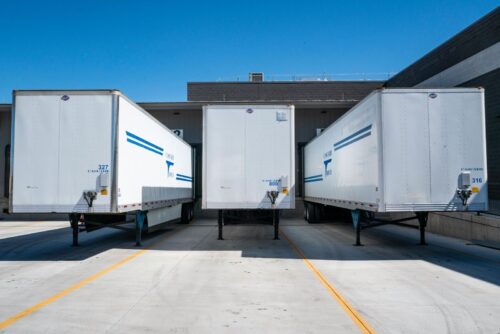House Bill of Lading vs Master Bill of Lading: Their Key Differences

Bills of lading play a critical role in the shipping and logistics industry. They serve as a legal contract that acknowledges the receipt of goods and outlines the terms of shipment.
They are evidence of the contract of carriage between the actual shipper, carrier, and recipient. So, they facilitate smooth transactions and ensure accountability throughout the shipping process.
In this intricate web of logistics, you need to understand the nuances between various types of bills of lading for efficient cargo management and trade.
If you are new to shipping logistics, you may rely on industry experts to navigate the complexities of bills.
This article aims to shed light on the distinctions between house bill of lading vs master bill of lading. We will also discuss how they help the entire consolidated shipment.
Understanding Bills of Lading
A Bill of Lading (B/L) is necessary in international shipment. It serves as both a receipt and a contract. It signifies the transfer of goods from the shipper to the carrier.
The document contains details such as type, quantity, and condition. The B/L is evidence of the carrier’s obligation to transport the goods and the recipient’s right to claim them upon arrival.
The B/L is a legal document that establishes terms of shipment, outlines responsibilities, and ensures compliance with regulations. This primary document can facilitate transparent and efficient transactions across the global supply chain.
What is a House Bill of Lading?
A House Bill of Lading (HBL) is of utmost importance in international shipping. It becomes more valuable in freight forwarders or Non-Vessel Operating Company scenarios. Unlike a Master Bill of Lading (MBL) issued by the ocean carrier, the HBL is issued by a freight forwarder or NVOCC. They act as an intermediary between the shipper and the carrier.
The House Bill of Lading contains essential information about the consignment. It includes details of the shipper and consignee, the goods’ description, and the carriage terms.
When is a House Bill of Lading Used?
A House Bill of Lading (HBL) is commonly used in scenarios involving less-than-container load (LCL) shipments. It’s useful when multiple shipments from different shippers are consolidated into a single container. In such cases, freight forwarders or Non-Vessel Operating Common Carriers (NVOCCs) issue HBLs to individual shippers.
Each represents a specific consignment within the consolidated container. The HBL is a contractual agreement between the shipper and the freight forwarder or NVOCC detailing the carriage terms and specifying each party’s obligations and liabilities.
It also acts as a receipt of goods and provides documentation for customs clearance and tracking purposes. Using HBLs simplifies the logistics process for LCL shipments and facilitates efficient cargo management.
What is a Master Bill of Lading?
A Lading Master Bill or Master Bill of Lading (MBL) is a critical document in the shipping industry. It serves as the primary contract of carriage between the actual carrier of the goods, typically the shipping line, and the shipper.
Unlike the House Bill of Lading (HBL), which is issued by freight forwarders, or Non-Vessel Operating Common Carriers (NVOCCs), the MBL is issued by the carrier itself. It represents the agreement between the carrier and the shipper for transporting goods from the port of origin to the port of destination.
The Master Bill of Lading contains information related to the shipment, including the voyage number, vessel name, and details of the ports of loading and discharge.
When is a Master Bill of Lading Used?
A Master Bill of Lading (MBL) is valid during full container load (FCL) shipments, where an entire container is dedicated to the goods of a single shipper. In FCL shipments, the carrier issues the MBL to the shipper.
Here, it serves as the primary contract of carriage for transporting goods from the port of origin to the port of destination. The MBL establishes the terms and conditions of shipment between the carrier and the shipper.
As the carrier’s official document, the MBL ensures accountability and transparency throughout shipping. It acts as legal evidence of the contractual obligations of both parties involved in transporting goods.
Comparing House and Master Bills of Lading

Understanding the differences between House and Master Bills of Lading will help you facilitate the international shipping and logistics process. These two documents serve distinct purposes and carry unique implications for shippers and carriers.
If you can differentiate between them, you can have clarity and accuracy in managing cargo shipments. Below are the main differences between House and Master Bills of Lading:
Issuer
- House Bill of Lading (HBL): Freight forwarders or Non-Vessel Operating Common Carriers (NVOCCs) issue HBL. It acts as an intermediary between shippers and carriers.
- Master Bill of Lading (MBL): The actual goods carrier issues the MBL. Typically, this is the shipping line responsible for transporting the cargo.
Purpose
- HBL: Consolidates multiple shipments from different shippers into a single container. It is a contract between the shipper and the freight forwarder or NVOCC.
- MBL: Represents the contract of carriage between the carrier and the shipper. It outlines the terms and conditions of shipping for the entire container load.
Legal Implications
- HBL: Establishes contractual agreements between the shipper and the freight forwarder or NVOCC, specifying obligations, liabilities, and responsibilities during shipment.
- MBL: Defines the contractual relationship between the carrier and the shipper. It details the carrier’s obligations for transporting the goods and the shipper’s rights and responsibilities.
Practical Implications
The differences between House and Master Bills of Lading have practical implications for shippers, consignees, and carriers. Shippers need to select the appropriate document for their shipping needs, while consignees rely on clear terms for planning.
Carriers must adhere to the terms outlined in both bills. Plus, they must ensure smooth transactions and effective communication throughout shipping. Understanding these distinctions streamlines operations and facilitates efficient logistics management.
Choosing the Right Bill of Lading

Choosing the appropriate Bill of Lading ensures efficient shipping operations. The type of Bill of Lading selected can significantly impact various aspects of the shipping process. Here are a few factors to consider:
- Shipment Type: The nature of the shipment, whether a full container load (FCL) or less-than-container load (LCL), influences the choice between a house and a master Bill of Lading. FCL shipments typically use a master Bill of Lading, while LCL shipments often require a House Bill of Lading to consolidate multiple shipments.
- Parties Involved: The number and roles of parties involved in the shipping transaction can determine the type of Bill of Lading you need. A House Bill of Lading may be more appropriate to accommodate individual consignments in complex logistics arrangements with multiple shippers, consignees, and intermediaries.
- Contractual Arrangements: The terms and conditions agreed upon by the shipper and the carrier influence the choice of Bill of Lading. It is essential for shipments where the shipper contracts directly with the carrier. On the other hand, when a freight forwarder or NVOCC is involved, a House Bill of Lading is issued to consolidate shipments and manage documentation efficiently.
- Liability and Risk Management: Considerations of liability and risk management also play a role in selecting the appropriate Bill of Lading. The type of Bill of Lading chosen can impact the allocation of risk and responsibility between the parties involved in the shipment, affecting insurance coverage and dispute resolution in case of damages or losses.
- Regulatory Compliance: Compliance with international trade regulations and legal requirements may dictate the type of Bill you need for specific shipments. Jurisdictions may have different documentation standards and legal frameworks for using Bills of Lading. s.
You must select the right Bill of Lading depending on shipment type, parties involved, contractual arrangements, liability and risk management, and regulatory compliance.
Common Misconceptions
Misconceptions about House and Master Bills of Lading often arise from the complexities of international shipping.
One common myth is that the Master Bill of Lading holds more legal weight than the House Bill of Lading. In reality, both documents are legally binding and outline the terms of shipment.
Another misconception is that the House Bill of Lading is only necessary for smaller shipments. However, its usage depends on various factors beyond shipment size, including the involvement of multiple parties.
Final Thoughts
Understanding the differences between House and Master Bills of Lading can help you navigate logistics management. We highlighted how these documents play distinct roles in global trade operations.
House Bills of Lading, issued by intermediaries like freight forwarders or NVOCCs, consolidate shipments and establish contracts between shippers and intermediaries. Meanwhile, Master Bills of Lading, issued by carriers, serve as primary contracts of carriage for entire container loads.
By grasping these nuances, stakeholders can navigate international shipping complexities more efficiently, ensure legal compliance, and facilitate transactions. With this knowledge, you will be capable of making informed decisions that optimize shipping strategies. If you aren’t sure, you can seek help from professionals to streamline logistics operations.
